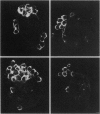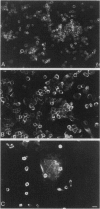Abstract
Multinucleated giant cells and osteoclasts arise through the fusion of mononuclear phagocyte precursors. To elucidate the mechanism by which cells of monocytic lineage fuse and differentiate into giant cells and osteoclasts, we hypothesized that, as with other cell fusion events, specific surface molecules mediate the adhesion/fusion process. It has been observed that macrophages can be induced to fuse with one another in response to specific stimuli or when placed in a specific microenvironment. The formation of giant cells is primarily associated with chronic inflammatory reactions and tumors, while osteoclasts differentiate on bone which they resorb. The fact that, under normal conditions, macrophages and monocytes fail to fuse in regions and tissues where they are present in large numbers suggests the regulated and transient expression of potential fusion molecules. To identify such a fusion-associated molecule, we established a macrophage fusion assay and generated monoclonal antibodies (mAbs) that alter the fusion of macrophages in vitro. We selected four mAbs that each had the ability to block the fusion but not the aggregation of macrophages in vitro. All four antibodies recognize surface proteins of 150 kDa. The expression of the antigens recognized by all four mAbs is restricted to macrophages that have been induced to fuse in vitro and in vivo and is inducible, transient, and regulated, as neither nonfusing macrophages nor macrophages fused in vitro express these antigens. These results support the hypothesis that macrophage fusion is mediated by specific fusion/adhesion molecules and also provide a means to study the molecular mechanisms of macrophage fusion.
Full text
PDF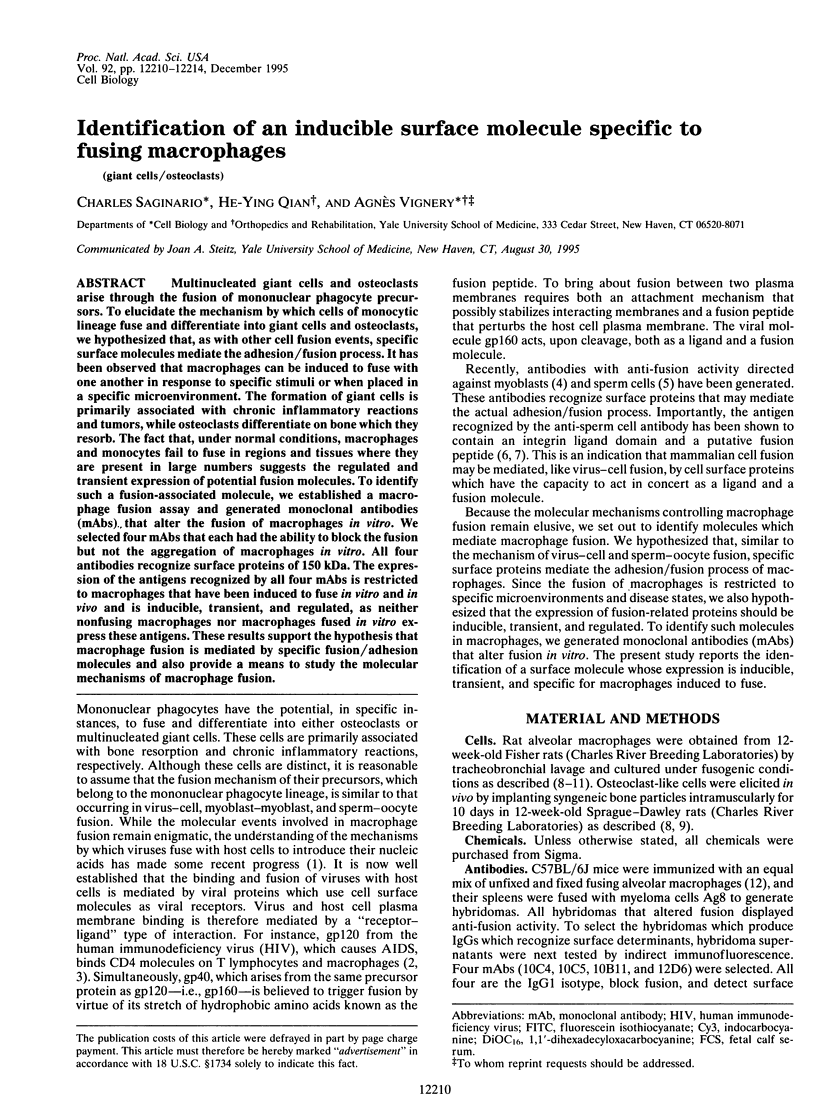
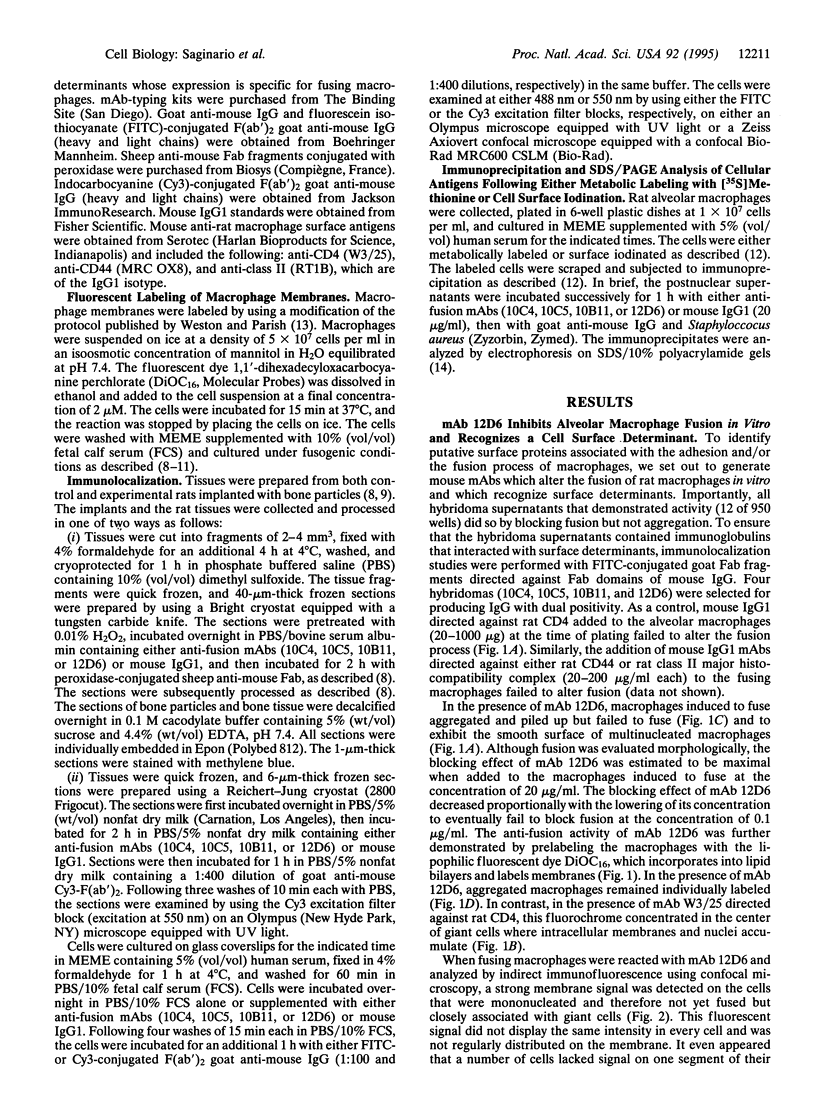
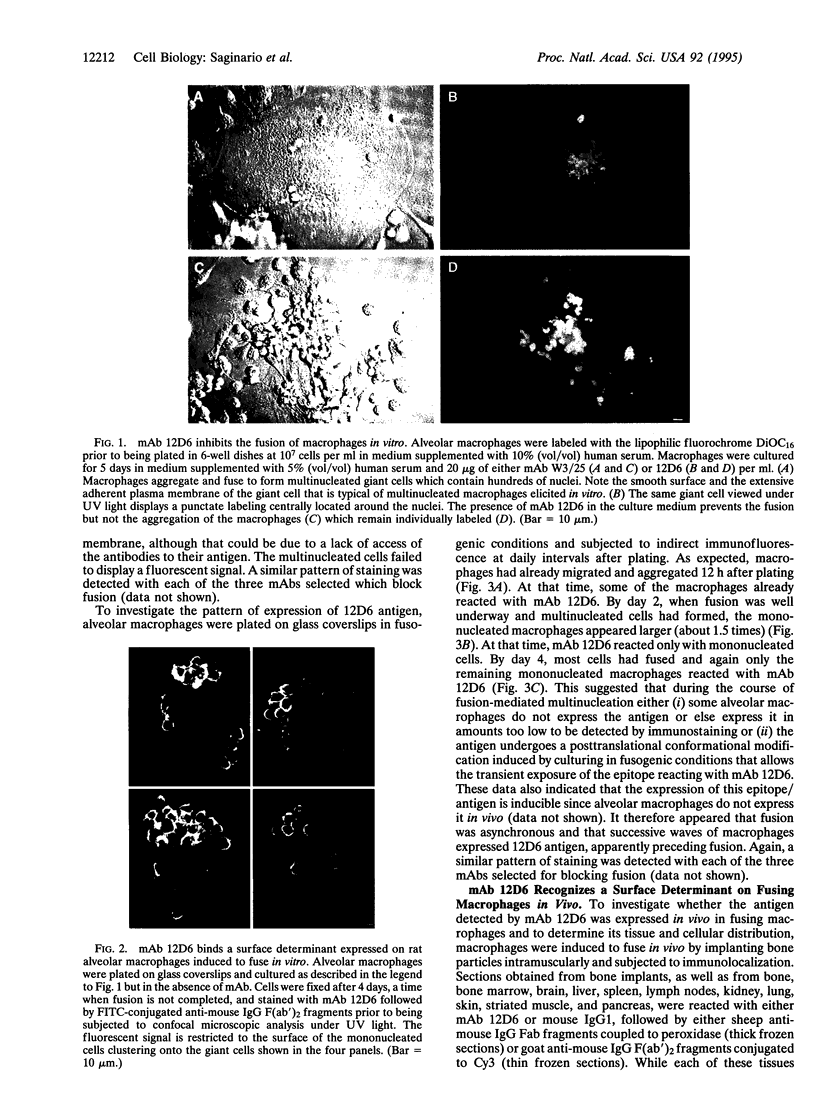
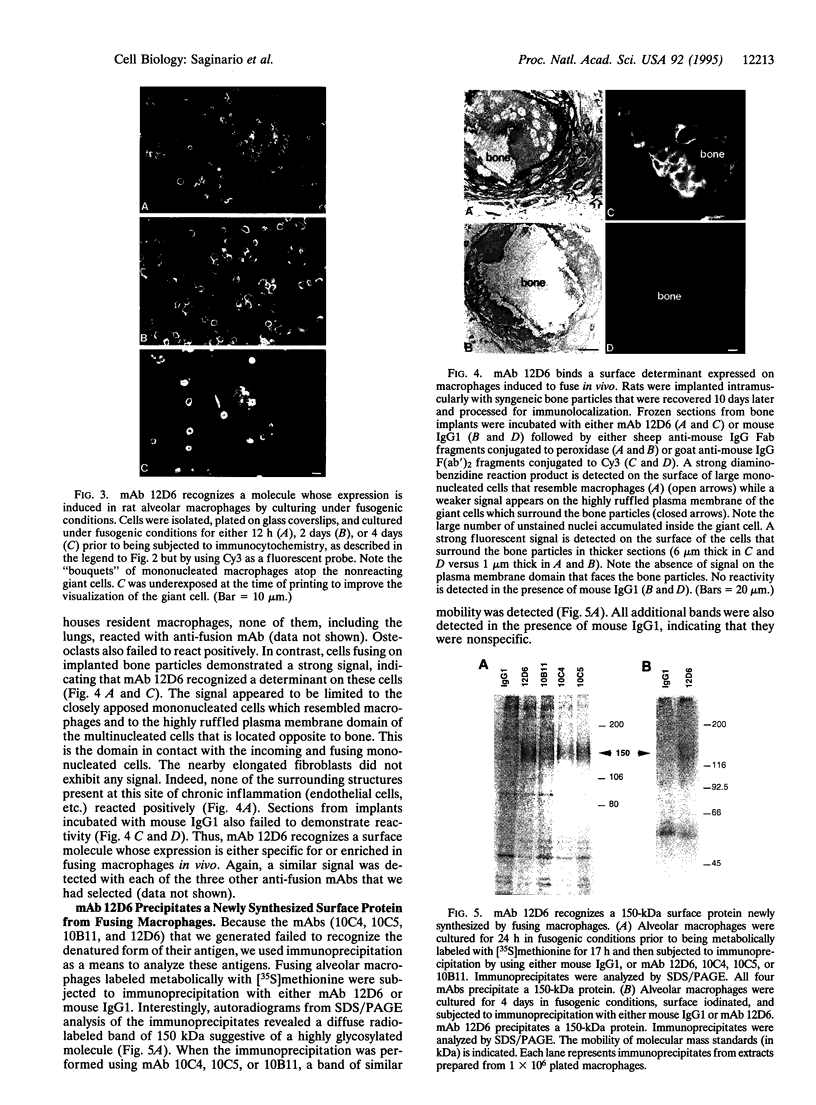
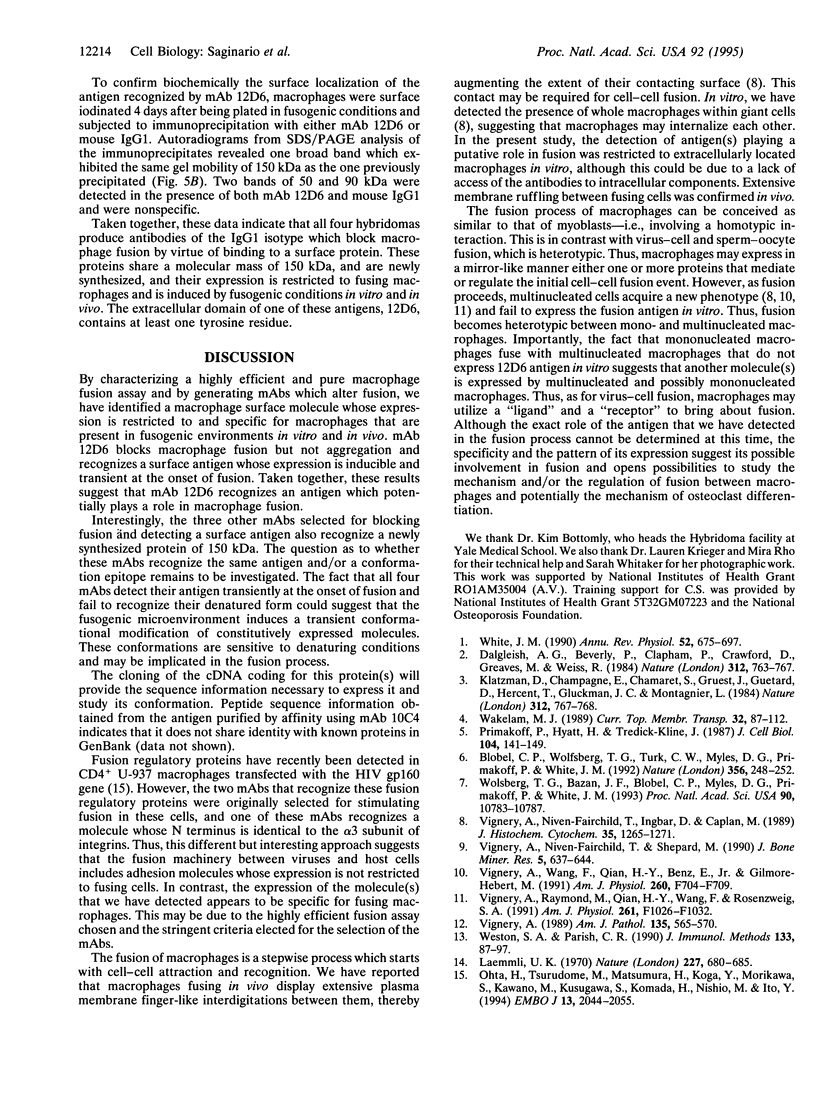
Images in this article
Selected References
These references are in PubMed. This may not be the complete list of references from this article.
- Blobel C. P., Wolfsberg T. G., Turck C. W., Myles D. G., Primakoff P., White J. M. A potential fusion peptide and an integrin ligand domain in a protein active in sperm-egg fusion. Nature. 1992 Mar 19;356(6366):248–252. doi: 10.1038/356248a0. [DOI] [PubMed] [Google Scholar]
- Dalgleish A. G., Beverley P. C., Clapham P. R., Crawford D. H., Greaves M. F., Weiss R. A. The CD4 (T4) antigen is an essential component of the receptor for the AIDS retrovirus. Nature. 1984 Dec 20;312(5996):763–767. doi: 10.1038/312763a0. [DOI] [PubMed] [Google Scholar]
- Klatzmann D., Champagne E., Chamaret S., Gruest J., Guetard D., Hercend T., Gluckman J. C., Montagnier L. T-lymphocyte T4 molecule behaves as the receptor for human retrovirus LAV. Nature. 1984 Dec 20;312(5996):767–768. doi: 10.1038/312767a0. [DOI] [PubMed] [Google Scholar]
- Laemmli U. K. Cleavage of structural proteins during the assembly of the head of bacteriophage T4. Nature. 1970 Aug 15;227(5259):680–685. doi: 10.1038/227680a0. [DOI] [PubMed] [Google Scholar]
- Ohta H., Tsurudome M., Matsumura H., Koga Y., Morikawa S., Kawano M., Kusugawa S., Komada H., Nishio M., Ito Y. Molecular and biological characterization of fusion regulatory proteins (FRPs): anti-FRP mAbs induced HIV-mediated cell fusion via an integrin system. EMBO J. 1994 May 1;13(9):2044–2055. doi: 10.1002/j.1460-2075.1994.tb06479.x. [DOI] [PMC free article] [PubMed] [Google Scholar]
- Primakoff P., Hyatt H., Tredick-Kline J. Identification and purification of a sperm surface protein with a potential role in sperm-egg membrane fusion. J Cell Biol. 1987 Jan;104(1):141–149. doi: 10.1083/jcb.104.1.141. [DOI] [PMC free article] [PubMed] [Google Scholar]
- Vignery A. Macrophage multinucleation is accompanied by the expression of new soluble and membrane antigens in mice. Am J Pathol. 1989 Sep;135(3):565–570. [PMC free article] [PubMed] [Google Scholar]
- Vignery A., Niven-Fairchild T., Ingbar D. H., Caplan M. Polarized distribution of Na+,K+-ATPase in giant cells elicited in vivo and in vitro. J Histochem Cytochem. 1989 Aug;37(8):1265–1271. doi: 10.1177/37.8.2546991. [DOI] [PubMed] [Google Scholar]
- Vignery A., Niven-Fairchild T., Shepard M. H. Recombinant murine interferon-gamma inhibits the fusion of mouse alveolar macrophages in vitro but stimulates the formation of osteoclastlike cells on implanted syngeneic bone particles in mice in vivo. J Bone Miner Res. 1990 Jun;5(6):637–644. doi: 10.1002/jbmr.5650050613. [DOI] [PubMed] [Google Scholar]
- Vignery A., Raymond M. J., Qian H. Y., Wang F., Rosenzweig S. A. Multinucleated rat alveolar macrophages express functional receptors for calcitonin. Am J Physiol. 1991 Dec;261(6 Pt 2):F1026–F1032. doi: 10.1152/ajprenal.1991.261.6.F1026. [DOI] [PubMed] [Google Scholar]
- Vignery A., Wang F., Qian H. Y., Benz E. J., Jr, Gilmore-Hebert M. Detection of the Na(+)-K(+)-ATPase alpha 3-isoform in multinucleated macrophages. Am J Physiol. 1991 May;260(5 Pt 2):F704–F709. doi: 10.1152/ajprenal.1991.260.5.F704. [DOI] [PubMed] [Google Scholar]
- Weston S. A., Parish C. R. New fluorescent dyes for lymphocyte migration studies. Analysis by flow cytometry and fluorescence microscopy. J Immunol Methods. 1990 Oct 4;133(1):87–97. doi: 10.1016/0022-1759(90)90322-m. [DOI] [PubMed] [Google Scholar]
- White J. M. Viral and cellular membrane fusion proteins. Annu Rev Physiol. 1990;52:675–697. doi: 10.1146/annurev.ph.52.030190.003331. [DOI] [PubMed] [Google Scholar]
- Wolfsberg T. G., Bazan J. F., Blobel C. P., Myles D. G., Primakoff P., White J. M. The precursor region of a protein active in sperm-egg fusion contains a metalloprotease and a disintegrin domain: structural, functional, and evolutionary implications. Proc Natl Acad Sci U S A. 1993 Nov 15;90(22):10783–10787. doi: 10.1073/pnas.90.22.10783. [DOI] [PMC free article] [PubMed] [Google Scholar]




